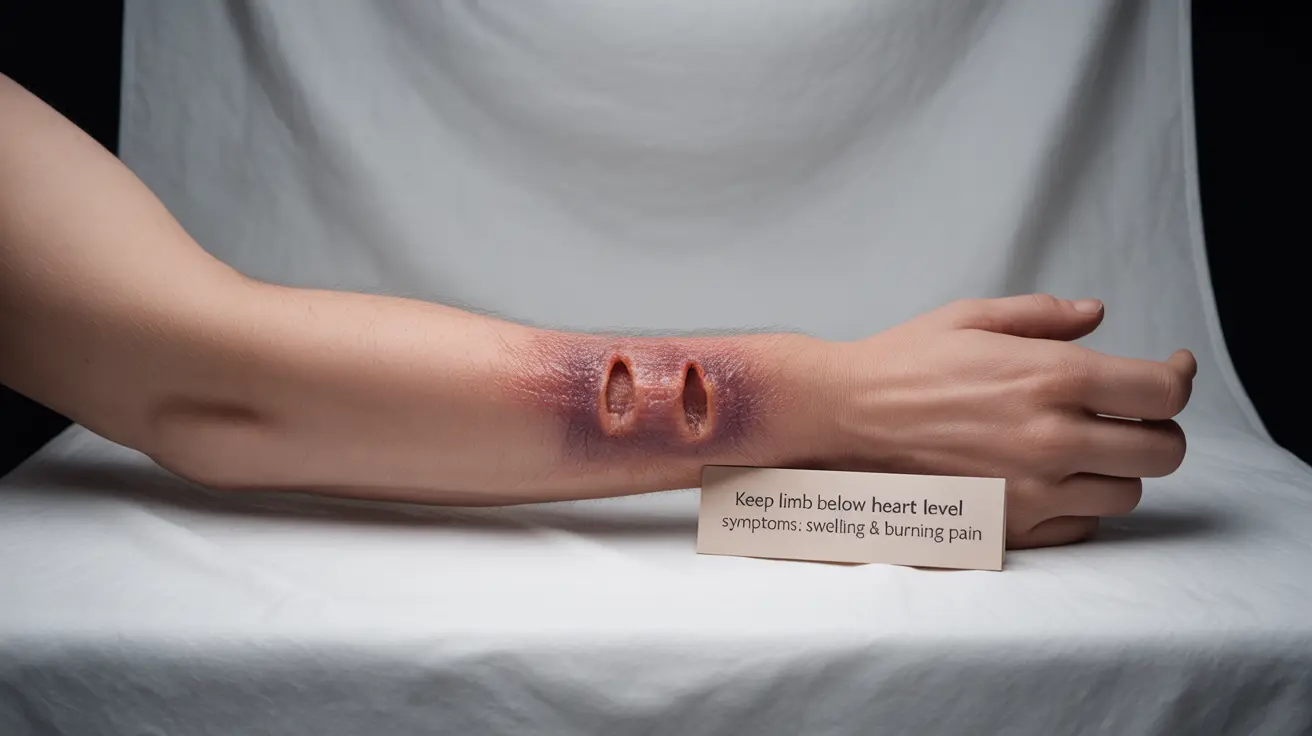When it comes to snake bites, recognizing symptoms quickly and responding appropriately can make a crucial difference in treatment outcomes. Understanding the signs of snake envenomation and knowing when to seek emergency care are essential skills, particularly for those living in or visiting areas where venomous snakes are common.
This comprehensive guide will walk you through the key symptoms to watch for, proper first aid responses, and what to expect during medical treatment. We'll also dispel common myths about snake bite remedies that could potentially cause more harm than good.
Immediate Snake Bite Symptoms to Watch For
The initial symptoms of a snake bite can vary depending on the species of snake and the amount of venom injected. Common immediate signs include:
- Puncture marks at the bite site
- Immediate burning pain
- Redness and swelling around the bite
- Difficulty breathing
- Nausea and vomiting
- Blurred vision or dizziness
- Weakness or numbness near the bite
Timeline of Symptom Development
Snake bite symptoms typically progress in stages, with some appearing immediately and others developing over several hours:
Immediate Effects (0-30 minutes)
- Local pain and swelling
- Visible fang marks
- Initial shock symptoms
Early Progression (30 minutes - 2 hours)
- Expanding swelling and bruising
- Increased pain
- Potential blood clotting changes
Advanced Symptoms (2-24 hours)
- Severe swelling that may spread
- Skin discoloration
- Systemic effects like fever
- Potential organ complications
Critical First Aid Steps
Proper first aid can significantly impact the outcome of a snake bite. Here are the essential steps to take:
- Keep the affected area below heart level
- Remove any constricting items
- Stay as still as possible
- Call emergency services immediately
- Mark the edge of swelling with a pen
- Note the time of the bite
Dangerous Myths and Actions to Avoid
Several traditional remedies and actions can worsen a snake bite situation:
- Don't apply a tourniquet
- Avoid cutting the wound
- Don't attempt to suck out the venom
- Don't apply ice or heat
- Don't take aspirin or other blood thinners
- Don't try to catch or kill the snake
Medical Treatment and Recovery
Hospital treatment for snake bites typically involves:
- Antivenom administration when appropriate
- Wound cleaning and monitoring
- Blood tests and vital sign tracking
- Pain management
- Antibiotics if needed
- Regular assessment of swelling and tissue damage
Frequently Asked Questions
What are the most common snake bite symptoms to watch for right away?
The most immediate snake bite symptoms include puncture marks, severe pain, rapid swelling, and redness at the bite site. You may also experience nausea, vomiting, and difficulty breathing. These symptoms can appear within minutes of the bite.
How quickly do snake bite symptoms usually appear, and when should I seek emergency care?
Initial symptoms appear within minutes, while severe symptoms can develop over several hours. Seek emergency care immediately after any snake bite, regardless of symptom severity, as delayed treatment can lead to serious complications.
What first aid steps should I take immediately after a snake bite at home?
Keep the bitten area below heart level, remove any constricting items, remain as still as possible, and call emergency services immediately. Mark the edge of swelling and note the time of the bite for medical professionals.
Are there any home remedies or actions I should avoid after a snake bite?
Avoid applying tourniquets, cutting the wound, attempting to suck out venom, applying ice or heat, or taking blood-thinning medications. These traditional remedies can worsen the situation and delay proper treatment.
How is a venomous snake bite treated in the hospital, and what is the recovery process like?
Hospital treatment typically involves antivenom administration, wound care, vital sign monitoring, and pain management. Recovery time varies but may take several days to weeks, depending on the severity of the bite and the type of snake involved.




